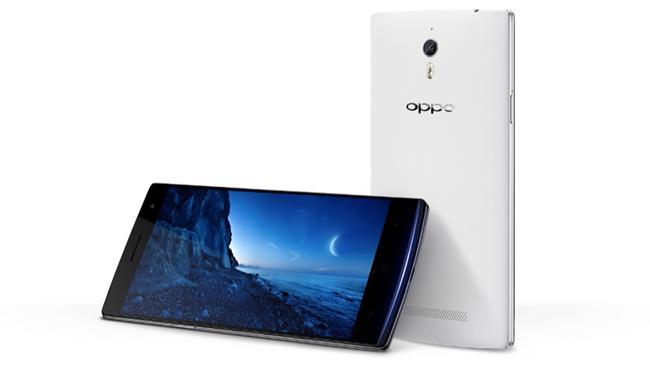Oppo comes up with a real find
A NEW smartphone model by Oppo Electronics comes packed with power and features.

CHINESE manufacturer Oppo Electronics has entered the Australian handset market with four smartphones and I’ve been trying out its premium model, the Oppo Find 7.
So far Chinese-branded phones from the likes of Huawei and Xiaomi have sought to offer more for less. You get better features at a reduced price, or premium features beyond that offered by the likes of Apple and Samsung, but for the same price.
The Find 7 bucks this trend by being expensive — more than $700. But you get a couple of remarkable features. One is fast charging using a technology called VOOC, or Voltage Open Loop Multi-Step Constant-Current Charging. The battery is several cells joined together and a largish charging current is divided between them.
Oppo says VOOC technology can charge the phone to 75 per cent battery capacity in 30 minutes, or a full charge in an hour. We got a 49 per cent boost in half an hour. You must use the company’s battery and special charger. When we used another USB charger, we registered a more pedestrian 28 per cent boost in 30 minutes.
Battery consumption savings weren’t so great, probably due to the phone’s powerful processor and screen that suck up the juice. Video at 1080 HD resolution ran for six hours 40 minutes on a single charge at 75 per cent brightness.
The Find 7 certainly is powerful. It has an ultra fast 2.5 gigahertz quad core processor, 3 gigabytes of memory, 32 gigabytes of storage, which can be expanded to 128 Gigabytes with a microSD card, and a 13 megapixel camera that shoots 4K video. It has a 5 megapixel selfies camera.
We ran the Find 7 through AnTuTu performance benchmarks and it came out on top of current rivals with a score of 45,167.
The phone’s piece de resistance is its high resolution 5.5-inch 2K screen, 1440x2560 pixels or 538 pixels per inch. Compared to the iPhone 5S (328 ppi) and the Galaxy S5 (432 ppi), the Find 7 is well ahead.
You notice excellent resolution when you play 4K video clips. Video looks sharp. The Find 7 also has really loud speakers, near the bottom at the back. But the sound tone is somewhat thin.
Unfortunately, its beautiful display doesn’t look so great outdoors. It gets blitzed by the sunlight even with brightness turned up.
And the colours are not as intense or saturated compared to, say, the S5 or Sony Xperia Z2. But that’s not necessarily a bad thing as skin tones look quite natural. Maybe we’ve been getting used to oversaturated colours on our phone screens.
One nice touch is the integration of Swype with the keyboard. You can drag your finger from key to key when you type rather than press. It makes messaging in Android faster and a joy. Another is the gesture panel, accessed by swiping downward on the left hand side. You create gestures as short cuts — such as an “S” to open the sound recorder.
There are a couple of downsides. It’s brick like in appearance, and not nearly as chic in looks as its little brother, the N1 Mini, but it is built solidly, despite being basically plastic construction. And the back is removable so you can swap batteries.
One other thing: the Find 7 runs Oppo’s variant of Google Android JellyBean 4.3 called ColorOS 1.4. It’s not based on the more recent Android KitKat 4.4. One of the disadvantages will be not having the better integration with consumer cloud services that KitKat offers.
And I found the phone’s IPS LCD capacitive touchscreen to be a fingerprint magnet.
The Find 7 will set you back $719. If that’s too much you can pick up the cheaper Find 7a for $629, which has a slightly smaller battery, a 1.6 Gigahertz processor and a 1280x720 resolution display.


